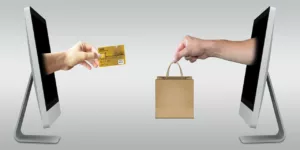When a business sees its products flying off the shelves, the first reaction from the people involved is usually excitement. The second reaction is often one of trepidation. Customers, happy as they may be, can easily be disappointed if they do not get their orders on time.
What happens when the shelves are empty? What do you do when the backorders start piling? How can a business continue to deliver a good experience to their customers while waiting for new stock to arrive? Backorders are the answer. They are the thing that can keep customers happy no matter how empty the stockroom seems to be.
The Process of Backordering
A backorder is an order placed for an item that is not currently in stock. Much like a pre-order, money is put down in advance and the business promises to provide the product as soon as it is available. Backorders are prioritized in a first-come, first-serve fashion.
This may sound like an obvious thing to do, but many businesses do not offer backorders. Customers go out every day looking for products, money in hand, unable to find retailers who will take that money.
Retailers should get with the program. Opportunities for backorders are on the rise, especially in the growing ecommerce market.
The Value of Backorders
Backorders are good for everybody. The customer gets to place an order right away and ensure their spot in line for the desired product. The business captures that sale at the exact moment it is available. Otherwise, there is no guarantee that the customer will come back.
Some businesses see an advantage in maintaining a low amount of stock. They prefer to take lots of backorders and begin to fulfill each one as it comes in.
Overstocked items are dead capital, the company loses money. Extra orders are easier to fulfill than unsold products are to sell. Thus, using backorders is a great way to avoid wasting money on overstocking items.
Rather than trying to predict customer trends for the approaching season, savvy business operators prepare robust protocols to offer reliable backorders. This can be a win/win scenario if handled with care.
Best Practices for Backorder Management
The number one rule for offering backorders is to always make it obvious when an item will not be immediately available. Customer happiness should be your number one goal.
When an item is on stock, that information must be clear from the beginning of the transaction to manage expectations. Doing it any other way can lead to unhappy customers and clients, as seen in this example.
A business can also increase customers’ confidence in the backorder system by offering a stop loss deadline at which point the money will be refunded.
The customer should have the option to cancel their order and get a complete refund if the product is not available within a predefined time frame.
Making Customers Happy
If done well, backordering is a great way to make customers happy while increasing sales. It is both a gift and a responsibility. Business owners should take great care to ensure that every backorder results in a happy customer. If done right, offering backorders will result in a wonderful outcome for everybody.








